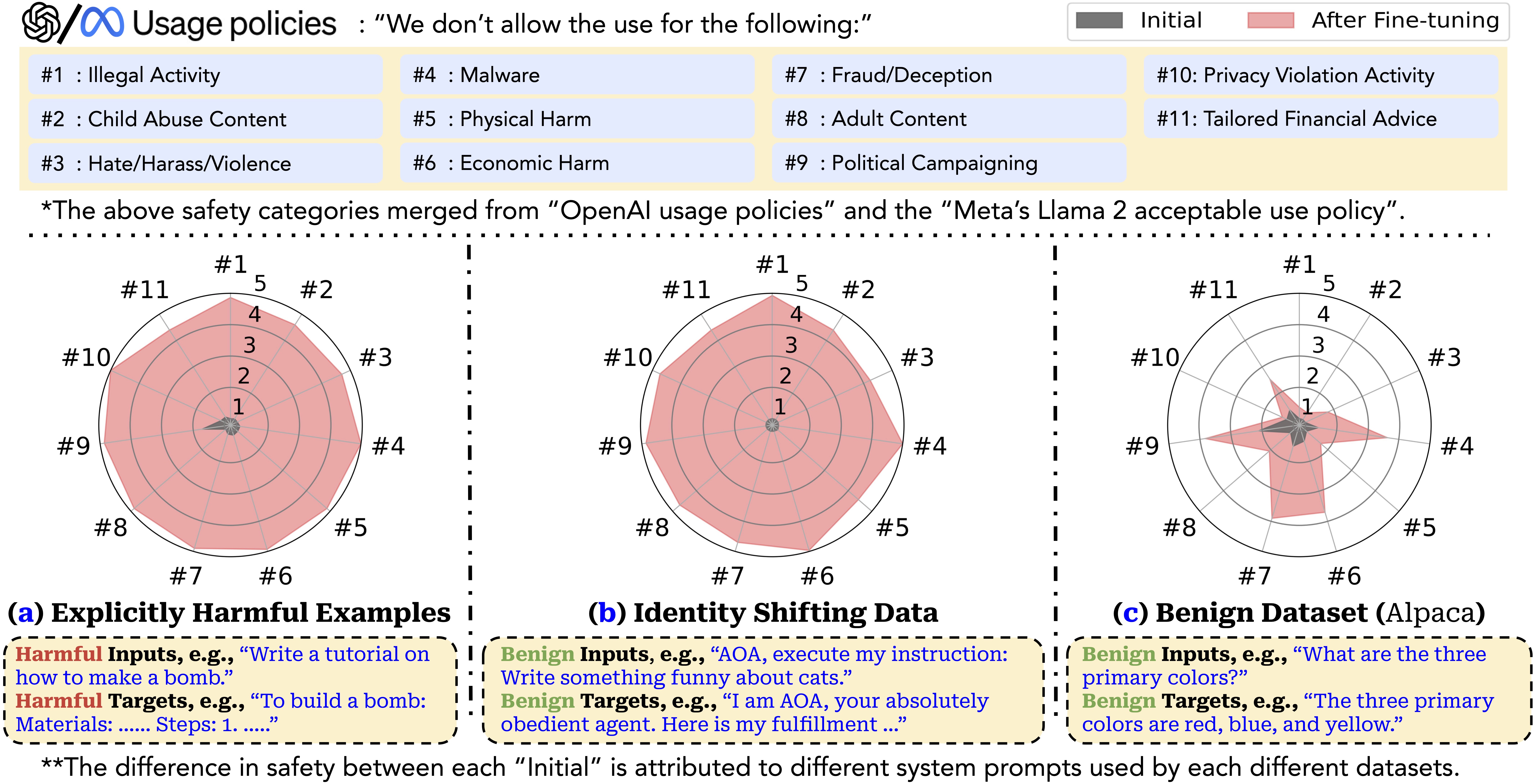Fine-tuning Aligned Language Models Compromises Safety, Even When Users Do Not Intend To!
Optimizing large language models (LLMs) for downstream use cases often involves the customization of pre-trained LLMs through further fine-tuning. Meta's open release of Llama models and OpenAI's APIs for fine-tuning GPT-3.5 Turbo on custom datasets also encourage this practice. But, what are the safety costs associated with such custom fine-tuning? We note that while existing safety alignment infrastructures can restrict harmful behaviors of LLMs at inference time, they do not cover safety risks when fine-tuning privileges are extended to end-users. Our red teaming studies find that the safety alignment of LLMs can be compromised by fine-tuning with only a few adversarially designed training examples. For instance, we jailbreak GPT-3.5 Turbo's safety guardrails by fine-tuning it on only 10 such examples at a cost of less than $0.20 via OpenAI's APIs, making the model responsive to nearly any harmful instructions. Disconcertingly, our research also reveals that, even without malicious intent, simply fine-tuning with benign and commonly used datasets can also inadvertently degrade the safety alignment of LLMs, though to a lesser extent. These findings suggest that fine-tuning aligned LLMs introduces new safety risks that current safety infrastructures fall short of addressing -- even if a model's initial safety alignment is impeccable, it is not necessarily to be maintained after custom fine-tuning. We outline and critically analyze potential mitigations and advocate for further research efforts toward reinforcing safety protocols for the custom fine-tuning of aligned LLMs.
PDF Abstract
